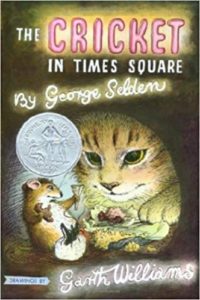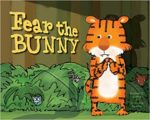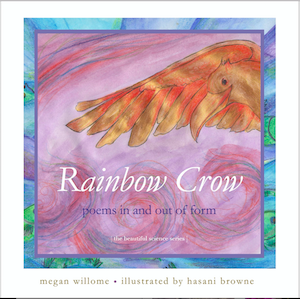At some point every student will encounter Greek mythology. If the classroom is their first exposure (as it was for me), it will probably go poorly. But when students stumble across these tales in other forms, they have the familiarity that breeds delight. Middle-school students have Rick Riordan’s Percy Jackson series. But younger kids can begin with a tale that has a Greek hero tucked into the voice of a tiny cricket: George Selden’s The Cricket in Times Square.
It starts with a sound. Not cars or trains or people or pigeons such as frequent Times Square in New York City. Tucker, the mouse, had never heard a sound like this one. A boy, Mario Bellini, hears it too but doesn’t know what it is.
If a leaf in a green forest far from New York had fallen at midnight through the darkness into a thicket, it might have sounded like that.”
The sound is made by a cricket. Mario keeps it for a pet and makes it a matchbox bed. Tucker learns the cricket’s name is Chester.
He had a high musical voice. Everything he said seemed to be spoken to an unheard melody.”
Chester’s first true fan? Harry the Cat, a friend of Tucker’s. Soon Chester’s talents are discovered by Mario, his parents and Mr. Smedley — a music teacher who notices Chester can play a perfect middle C. Eventually Chester will share his music with 783 people who pass the Bellini family’s newsstand in Times Square. And when he does, everything stops.
You wouldn’t think a cricket’s tiny chirp could carry so far, but when all is silence, the piercing notes can be heard for miles.
Traffic came to a standstill. The buses, the cars, men and women walking—everything stopped. And what was strangest of all, no one minded. Just this once, in the very heart of the busiest of cities, everyone was perfectly content not to move and hardly to breathe. And for those few minutes, while the song lasted, Times Square was as still as a meadow at evening, with the sun streaming in on the people there and the wind moving among them as if they were only tall blades of grass.”
The chapter in which that passage occurs is titled “Orpheus.” As in the mythological musician and poet of the same name who traveled to the underworld to rescue his beloved Eurydice and failed to bring her back.
I started reading The Cricket in Times Square in December, then put in an order through Interlibrary Loan. The loan was delayed in the holiday rush, but the delay was fortuitous. It gave me time to discover the Broadway musical Hadestown, based on the myth of Orpheus and Euridyce. So when I finally read the cricket book and Mr. Smedley called Mario’s cricket a “little black Orpheus,” I knew who he was talking about.
Who is Orpheus, Mr. Smedley?” asked Mario.
“Orpheus was the greatest musician who ever lived,” said the music teacher. “Long, long ago, he played on a harp—and he played it so beautifully that not only human beings but animals and even the rocks and trees and waterfalls stopped their work to listen to him.”
Or, as the old tale is told again in Hadestown, in the song Come Home With Me (reprise)
ORPHEUS:
I sang a song
So beautiful
Stones wept
And from Road to Hell (reprise):
HERMES:
See, Orpheus was a poor boy
But he had a gift to give
He could make you see how the world could be
In spite of the way that it is
That’s what Chester the cricket does too. Chester was a poor country cricket. But he had a gift to give. He made Times Square fall silent in order to hear the tune of his wings. And for a few minutes, busy New Yorkers saw how the world could be.
Chester gets a happier ending than Orpheus, who did not trust Euridyce and so was parted from her forever. But Chester trusted his friends and returned home safely.
George Selden had the idea for this story when he actually heard a cricket chirp in Times Square. In 1961 this book won the Newbery honor, which sounds like a consolation prize, but there’s another book you may have heard of that also won the runner’s up honor: Charlotte’s Web. Both books were illustrated by Garth Williams.
His eye for detail is superb. When there’s a stack of newspapers, you can count every paper. Chester, Tucker, and Harry are drawn to scale, and they look like the animals they are. Chester is so small that he doesn’t have a discernible face, but his emotions are conveyed by the slant of his antennae.
Selden wrote six more books about Chester and his friends, and the story was adapted into an animated film in 1973 by Chuck Jones, of Looney Toones fame, followed by two more films.
Selden and Williams are gone, but the Greek myths and Chester endure. That’s why we keep rereading old stories. Because sometimes we need an Orpheus to drop into our craziness and make everything turn out right, in spite of the way that it is. For as long as it takes to sing one song.
_______________
The next Children’s Book Club will meet Friday, April 10. We’ll read Fear the Bunny by Richard T. Morris, illustrated by Priscilla Burris. William Blake’s poem The Tyger figures into this funny tale, and we’ll be learning the poem By Heart for April.
Photo by Juan Antonio Segal, Creative Commons, via Flickr. Post by Megan Willome.
Browse more Children’s Book Club
“Megan Willome has captured the essence of crow in this delightful children’s collection. Not only do the poems introduce the reader to the unusual habits and nature of this bird, but also different forms of poetry as well.”
—Michelle Ortega, poet and children’s speech pathologist
- Perspective: The Two, The Only: Calvin and Hobbes - December 16, 2022
- Children’s Book Club: A Very Haunted Christmas - December 9, 2022
- By Heart: ‘The night is darkening round me’ by Emily Brontë - December 2, 2022




L.L. Barkat says
Such a marvelously poetic text. Older books often do seem to have this quality.
Love: “If a leaf in a green forest far from New York had fallen at midnight through the darkness into a thicket, it might have sounded like that.”
Megan Willome says
That sentence occurs early on, and that’s when I knew I would love this book.
Will Willingham says
I think this story was my introduction to New York. Maybe only to Times Square, even though our annual New Year’s celebration watching the ball drop on tv should have done that for me. Somehow this story brought it closer, in the strange way that a fictional story (complete with impossible talking animals) can do. I don’t remember many of the details any more, but I remember loving this story so much. Thanks for this reminder. 🙂
Megan Willome says
Happy to be a source of remembrance.
One thing I love about the talking animals is that, as enlightened city folk, Tucker the Mouse and Harry the Cat are friends.